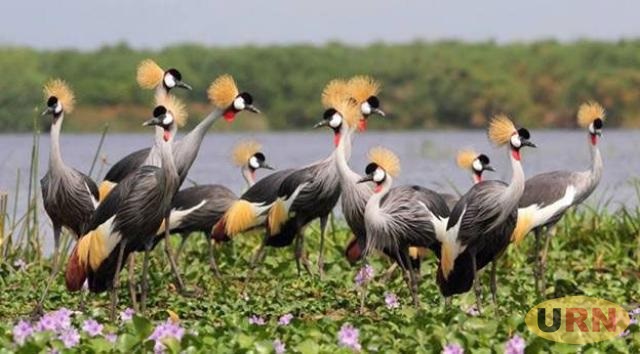
Wetland Conservation Efforts Restore Grey Crowned Crane Habitats in Terego
Terego, Uganda | THE INDEPENDENT | Conservation efforts in Terego have successfully restored the previously destroyed breeding places of the Grey Crowned Crane. The habitats are now fully functional, thanks to a beekeeping project in the area.
The restored wetland is along the Nvete River stream in Joyia village, part of the 40 hectares of Otuambari Forest Reserve, which locals had converted into farmland. This achievement was highlighted during a media tour of the “Restoring and Conserving Degraded Fragile Ecosystems for Improved Community Livelihoods among Refugees and Host Communities in West Nile and Mid-Albertine Regions” project by the European Union.
Drani Cosmas, an official with Nature Uganda and the program assistant of the project in charge of West Nile rivers and rhinelands, noted that this area, located 15 km from a refugee settlement, was a local government forest reserve whose restoration had previously failed due to lack of funds.
It was of particular interest due to its potential as a breeding place for the Crested Crane, as confirmed by numerous ecological surveys.
“The five hectares near the river Envete were of great biodiversity concern because this stream is where the cranes used to feed and breed. When farmers encroached on the area, the cranes started moving away,” Drani stated.
Since the commencement of the restoration program, cranes have returned to the area and resumed their breeding activities. Drani attributes this success to reforestation efforts using agroforestry trees and the introduction of beekeeping, which now includes up to 50 beehives. This initiative not only generates income but also helps deter trespassing in the habitat.
A total of 300 beehives have been distributed across various wetlands in Terego District. Flavia Tiaru, a program beneficiary who formerly cultivated in the forest reserve, shared through a translator that they had been cultivating in the area for more than six years.
With the new knowledge and alternative livelihood options provided, she assured that they would not return to farming in the reserve. Tiaru observed that when they were still cultivating in the reserve, there were few crested cranes. Recently, however, she has seen an increase in their numbers. “Those birds used to be few here, but now their numbers have somehow increased more than before,” she stated.
This restoration offers hope not only for the protection and restoration of the area’s biodiversity but also for Uganda’s national bird. The population of the Grey Crowned Crane has drastically declined due to persistent encroachment on the country’s wetlands, their natural habitat.
Reports indicate that Uganda has lost up to 80 percent of its over 100,000 crested crane population in the past 40 years.
Continued strides in conservation could lead to the bird being removed from the endangered species list, where it was placed by the International Union for Conservation of Nature (IUCN) in 2012.
 The Independent Uganda: You get the Truth we Pay the Price
The Independent Uganda: You get the Truth we Pay the Price



